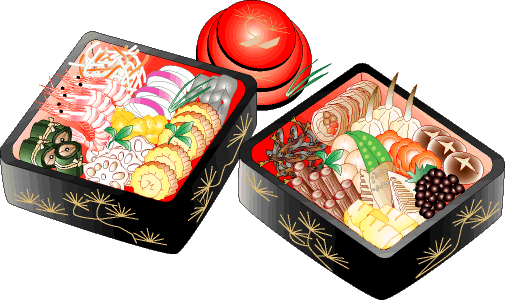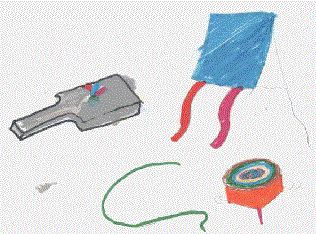Hatsumoude...Food...Playing ....
 s..pace
s..pace sp..ace
sp..ace

We go to a Jinjya to worship on New Year's
Day. Jinja means a house of gods where
we believe various gods live (e.g., business, traffic
safety, escaping from evil, and
romance. Also we worship to get our wishes.
Sometimes, we
wear traditional Kimonos on these days, but
recently most young
men don't wear them. Many women wear
them for fashion.
Food during the New Year's
tends to be special as well. Traditionally, New Year's food is placed in nestable,
laquered boxes. These boxes contain food which
does not
spoil easily and which can obviate the need
for cooking for the holidays. Contents
vary from region to region, but popular items
include candied black beans, fish eggs
attached to seaweed, dasheens, kelp, and fish. Another
popular New Year's food with
a regional flavor is the New Year's soup known as ozoni.
In West Japan, it tends to be
made with a soybean paste base giving it a whitish appearance,
whereas in East Japan
it tends to be made of fish stock making it more like
a clear broth. This soup is usually
eaten on New Year's Day, making it more of a family-oriented
dish.
Hatsumoude...Food...Playing
....
 s..pace
s..pace sp..ace
sp..ace
